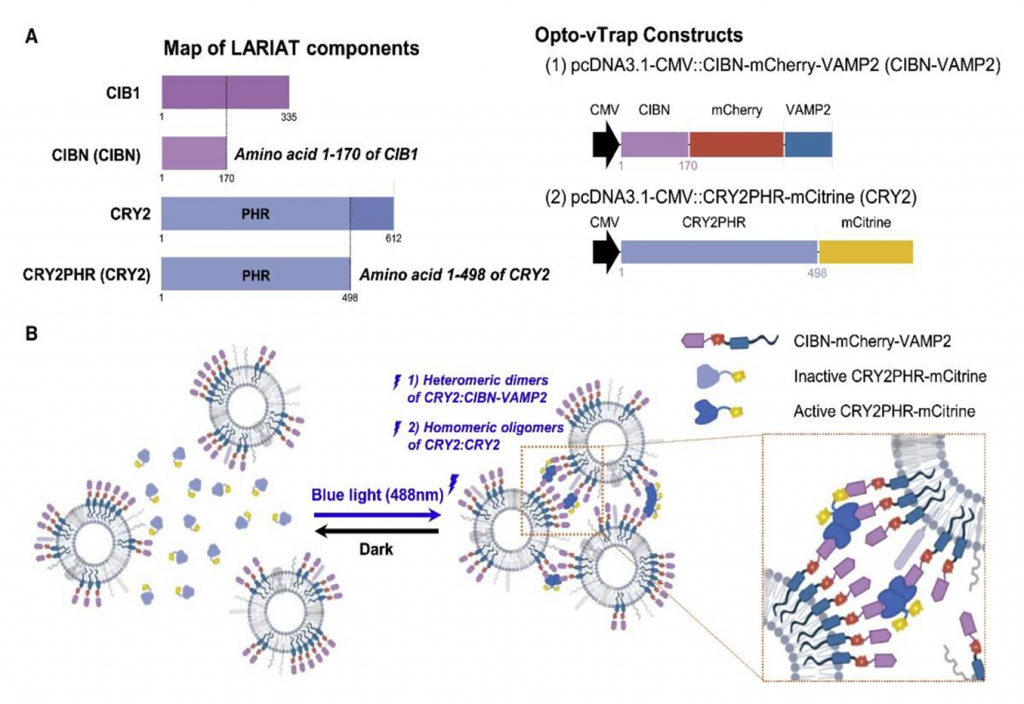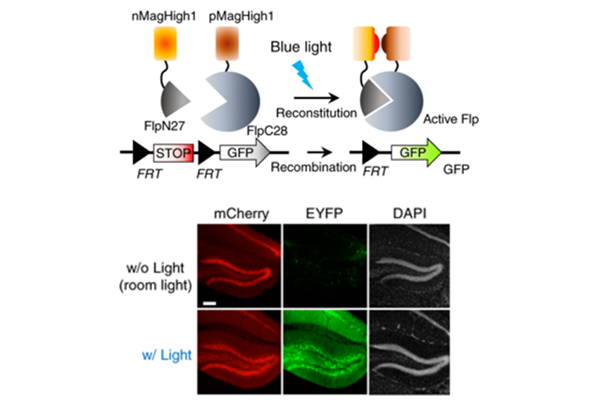-
Research Highlight Top Story
Programmable RNA acetylation with CRISPR-Cas13
Prof. Heo’s group has developed a method for targeted RNA acetylation by integrating a RNA-binding CRISPR-Cas13 system and engineered human NAT10 enzyme. ...read more
-
Research Highlight
Opto-vTrap, an optogenetic trap for reversible inhibition of vesicular release, synaptic transmission, and behavior
Spatiotemporal control of brain activity by optogenetics has emerged as an essential tool to study brain function. To silence brain activity, optogenetic probes, such as halorhodopsin and archaerhodopsin, inhibit transmitter release indirectly by hyperpolarizing membrane potentials. However, these probes cause an undesirable ionic imbalance and rebound spikes. Moreover, they are not applicable to use in non-excitable glial cells. In this study we engineered Opto-vTrap, a light-inducible and reversible inhibition system to temporarily trap the transmitter-containing vesicles from exocytotic release. Light activation of Opto-vTrap caused full vesicle clusterization and complete inhibition of exocytosis within 1min, which recovered within 30 min of light off. We found a significant reduction in synaptic and gliotransmission upon activation of Opto-vTrap in acute brain slices. Opto-vTrap significantly inhibited hippocampus-dependent memory retrieval with full recovery within an hour. We propose Opto-vTrap as a next-generation optogenetic silencer to control brain activity and behavior with minimal confounding effects....read more
-
Research Highlight
Noninvasive Optical Activation of Flp Recombinase in Deep Mouse Brain Regions
Spatiotemporal control of gene expression or labeling is a valuable strategy for identifying functions of genes within complex neural circuits. Here, we develop a highly light-sensitive and efficient photoactivatable Flp recombinase (PA-Flp) that is suitable for genetic manipulation in vivo. The highly light-sensitive property of PA-Flp is ideal for activation in deep mouse brain regions by illumination with a noninvasive light-emitting diode. In addition, PA-Flp can be extended to the Cre-lox system through a viral vector as an Flp-dependent Cre expression platform, thereby activating both Flp and Cre....read more
-
Research Highlight
Superfast and Sensitive Optogenetic Module, CRY2clust
A new optogenetic method has been developed to induce rapid and robust protein clustering....read more

291 Daehak-ro Yuseong-gu Daejeon, 34141, Republic of Korea
Partnered with KAIST Breakthroughs and KAIST Compass




